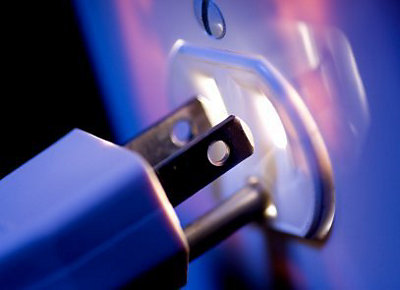How’s My Electricity Use Calculated? (And What’s A Kilowatt Hour?)

November 26, 2013
We’ve talked a lot about how you can reduce your energy bills. And for many homeowners that’s enough – they just want the dollar amount to go down.
But others want to know the nitty-gritty details of home energy use so they can find even more ways to trim their bills. If that’s you, this post is for you. We’ll show you how your electricity use is calculated, measured, and billed (as well as what the heck a Kilowatt Hour is.)
Calculating energy use
Electricity use isn’t as easy to understand as water use. Each month, you get a bill for the number of gallons you used for the month. It’s measured in volume. But electricity is more difficult – it’s not a solid, liquid or gas.
Electricity is energy, and energy is usually measured in Joules.
However, if you’ve ever looked at your home’s electric bill, you know it doesn’t show the number of Joules you’ve “used”. Instead, the electric company measures how much electricity you use in Kilowatt hours (kWh). This is done for simplicity. It’s more difficult to bill by the number of Joules used because the number would be much larger.
For example, the formula for calculating power in Joules is:
Energy = Power x Time
And we know that 1 Watt = 1 Joule / Second. So, if you left a 100-Watt bulb on for 1 hour (3600 seconds), you’d have:
Energy = 100 Joules/second x 3600 seconds = 360,000 Joules
That calculation requires converting hours to seconds, which isn’t as intuitive as staying with a unit of measure that uses hours, which is why energy companies use Kilowatt hours, and results in quite a large number for one single light bulb.
What is a Kilowatt hour?
A Kilowatt hour is defined as the amount of energy delivered by 1000 Watts over one hour of time. Using the formula above, we can convert Kilowatts to Joules like so:
Energy = 1000 Joules/second (remembering that 1 Watt = 1 Joule/second) x 3600 (seconds in one hour) = 3.6 million Joules
As you can see, it makes more sense for power companies to deal with kWhs than Joules as dealing with Joules could quickly become unwieldy.
This also has the added benefit of allowing you to easily calculate how much an appliance or light should cost you.
Calculating the cost of your lights and appliances
Most electronic devices are measured in Watts, which makes it easy to estimate how much energy they will use. Let’s compare a 100-Watt incandescent light bulb with a 18-Watt LED. Both these lights emit about the same amount of light but use very different amounts of energy.
Assuming these lights are used for 4 hours per day and remembering the formulas above, we can calculate their yearly energy consumption as follows:
100 Watts x 4 hours x 365 = 146,000 Watt-hours
To convert this number to kWh, simply divide it by 1000, which gives us 146 kWh. Now apply the same formula to the 18 Watt LED.
(18 Watts x 4 hours x 365) / 1000 = 26.28 kwh
As you can see, the LED uses much less energy. To find out how much the difference is in terms of money, simply multiply the numbers by your average kWh rate. Let’s say you pay $0.11 per kWh.
100-Watt incandescent = 146 x .11 = $16.06
18-Watt LED = 26.28 x .11 = $2.89
The same calculations can be done on any appliance you purchase, all you have to know is the Wattage and how long it will run per day.
Have any other electricity questions?
Hopefully now you understand a little more about how your electrical bill is calculated and billed. (Now, if only your bill was a little easier to read.)
Energy Today is a professional electrical contractor serving areas in Florida with offices in Sarasota, Tampa, Orlando, and Naples.